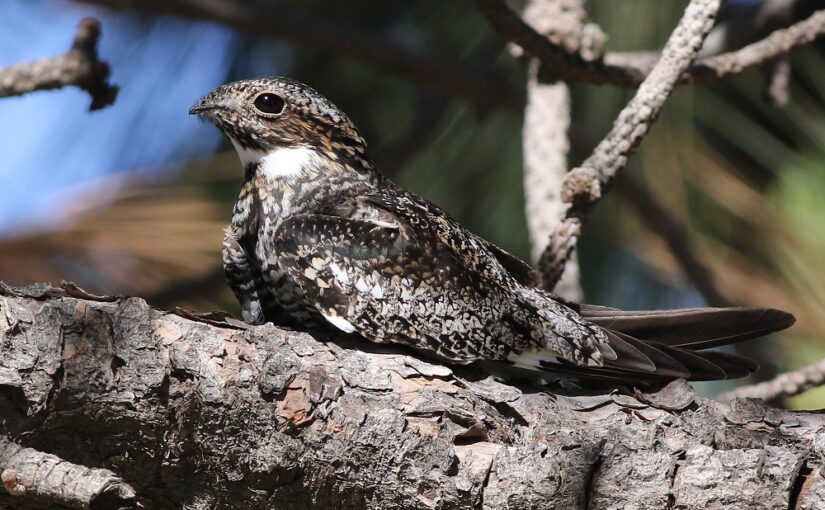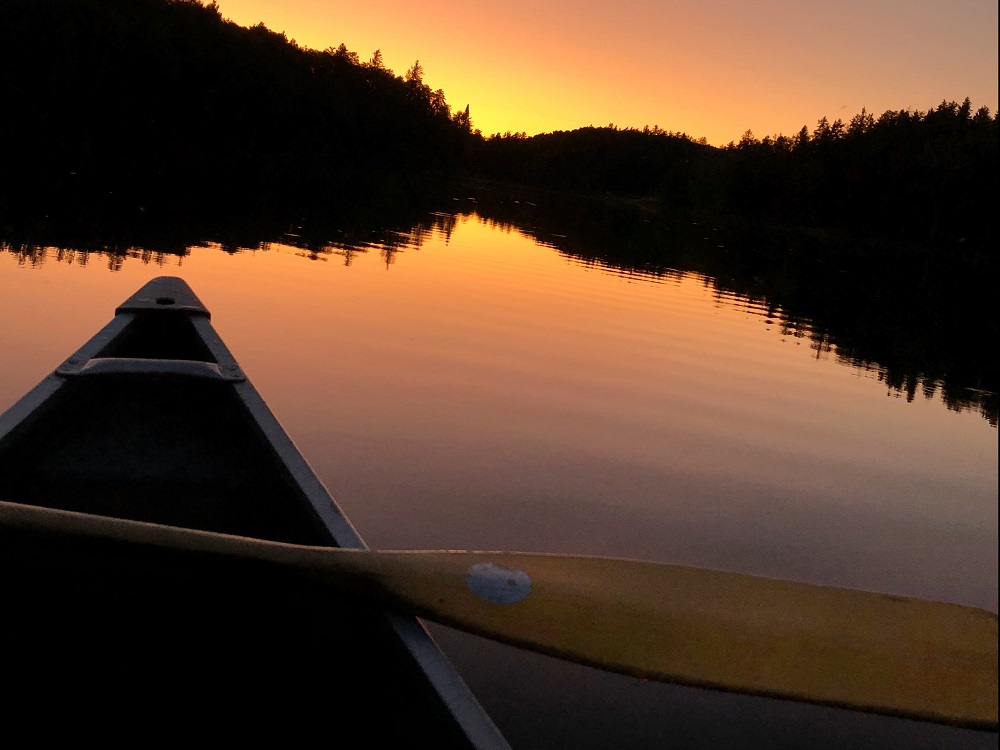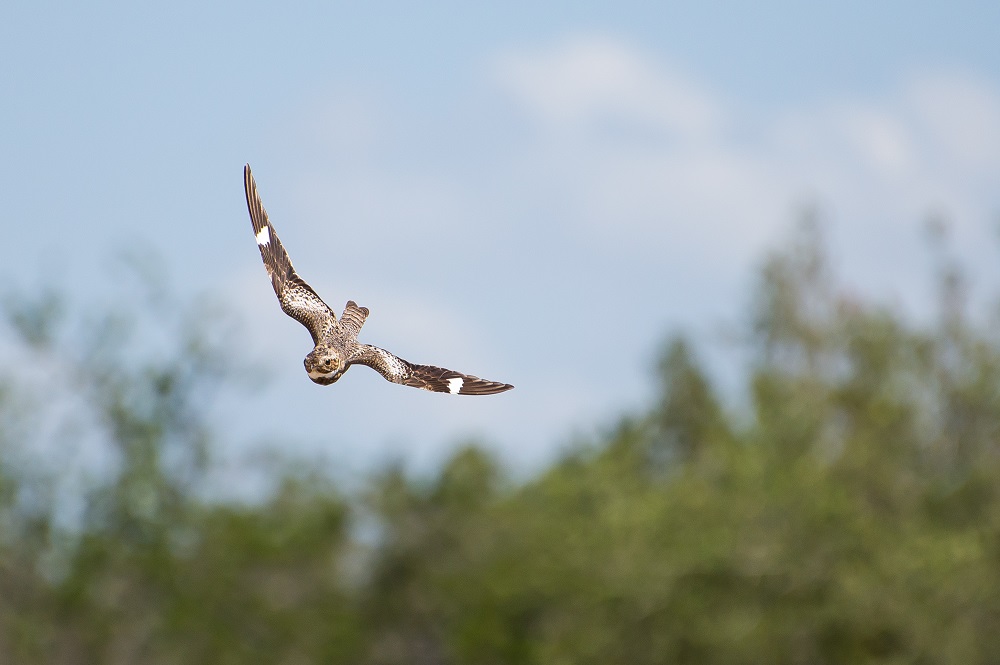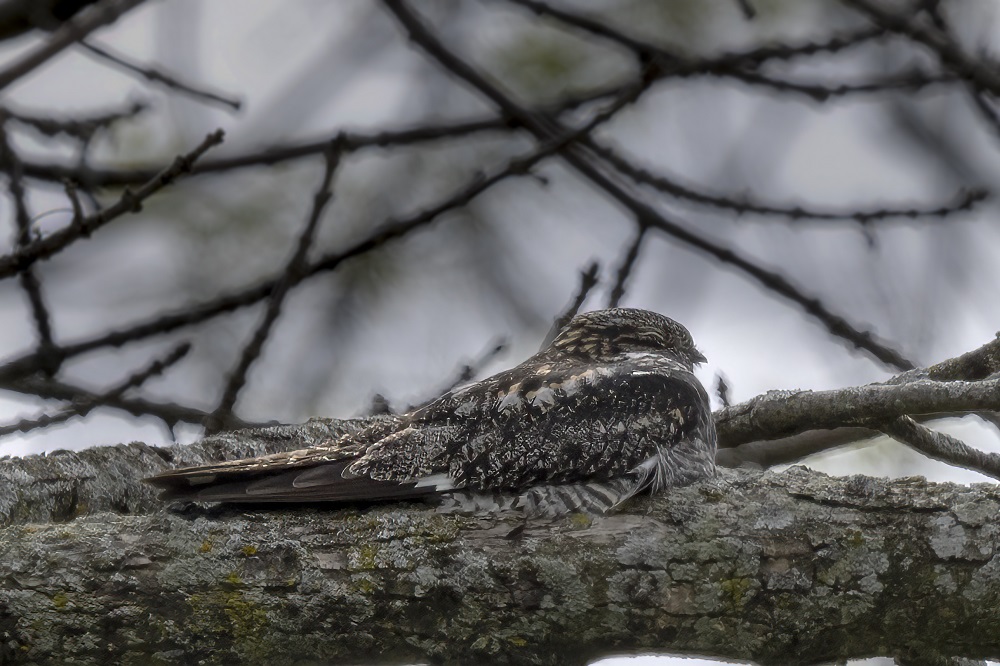Today’s blog was written by former Discovery leader at Kettle Lakes Provincial Park and current birder and Senior Discovery Ranger at Rondeau Provincial Park, Sarah Wiebe.
Meet the Common Nighthawk.
This peculiar nightjar (medium-sized nocturnal bird) calls Ontario home during the summer months and can be seen all over the province, including cities and provincial parks!
They are part of a group of birds called aerial insectivores, meaning they catch their insect prey while flying.
These aerial acrobats help farmers and communities by eating pesky insects.
You may be familiar with other aerial insectivores like swallows, flycatchers, swifts and other nightjars like the Whip-poor-will.
Have you spotted a Common Nighthawk?
Unlike what their name suggests, Common Nighthawks aren’t most active during the night! They prefer to hunt when insects are most bountiful.
These birds enjoy a good sunrise and sunset.
They are most active 30 minutes before and after sunset, and an hour before until 15 minutes after sunrise.
Despite having tiny beaks, Nighthawks can open their mouths wide to catch their prey. Their bristly lining in their mouth also helps to catch insects.
You can recognize the Common Nighthawk most easily by its call and wing shape. Listen for a sharp “peent, peent” call.
The males make a booming noise with their wings while diving in the air. They can also clap their wings when predators come too close.
Apps like Merlin Bird ID can help you learn the Common Nighthawks calls.
Did you know Common Nighthawks are excellent travelers? They spend their winters in warmer places like Peru, Ecuador, and Brazil. They return to nest in Ontario, including parks like Kettle Lakes.
Keep an eye out for their boomerang-shaped wings while visiting a park on a summer evening. When flying, they look a little like a soaring hawk, but, really, they are not hawks at all!
For those outside of natural areas, you may still spot a Common Nighthawk. They like to stop in big cities like Toronto before reaching their nesting site.
Common Nighthawks aren’t so “common” anymore
Unfortunately, aerial insectivores are the fastest declining group of birds in Canada (according to the 2019 “State of Canada’s Birds” report).
The Common Nighthawk is a species of special concern in Ontario and listed as threatened in Canada.
Habitat loss, urban land use, overuse of pesticides, and climate change all play a role in the decline of these species.
Across its range, this species is estimated to have declined over 50% in the past 40 years.
To monitor the Common Nighthawk, park staff and park visitors participate in community science projects like the Canadian Nightjar Survey.
During summer months, ecologists at Kettle Lakes spend time listening for nighthawks in the park to learn more about how this species-at-risk is doing.
Wondering how you can help Common Nighthawks?
- make your property “bird friendly”
- turn off your outdoor lights and close your blinds to prevent light pollution
- decorate your windows to prevent window strikes
- don’t use excessive pesticides
- report your sightings on eBird, iNaturalist, or to Ontario’s Natural Heritage Information Centre (NHIC)
- participate in community science projects like the Canadian Nightjar Survey and Ontario Breeding Bird Atlas
This is the seventh edition of our 2023 species-at-risk series.
Read our previous edition: Dinosaurs in parks: the Lake Sturgeon



